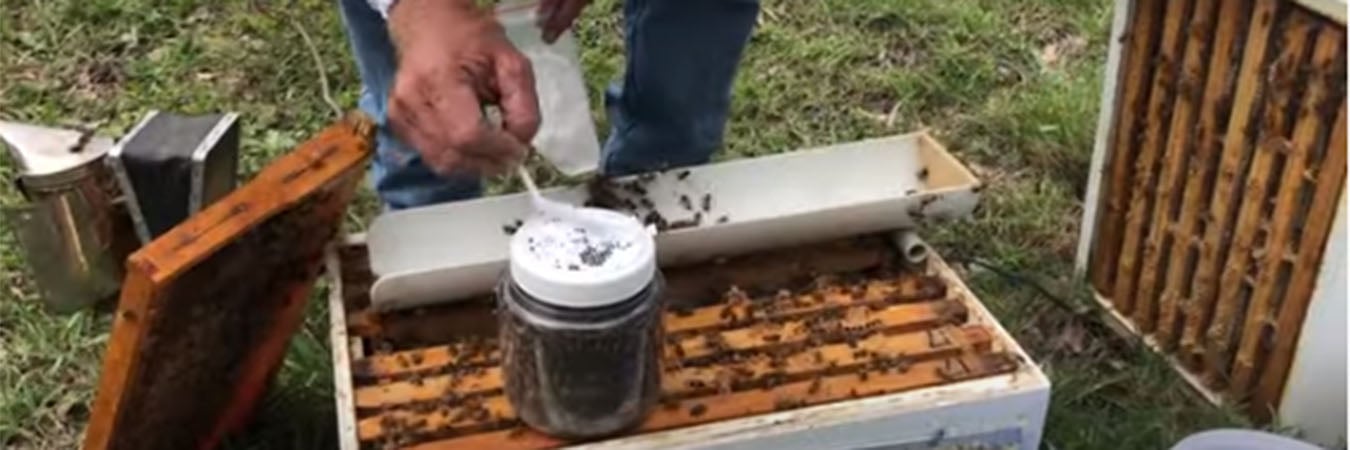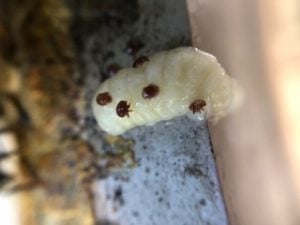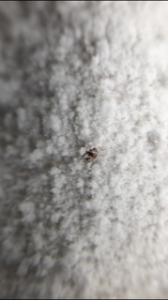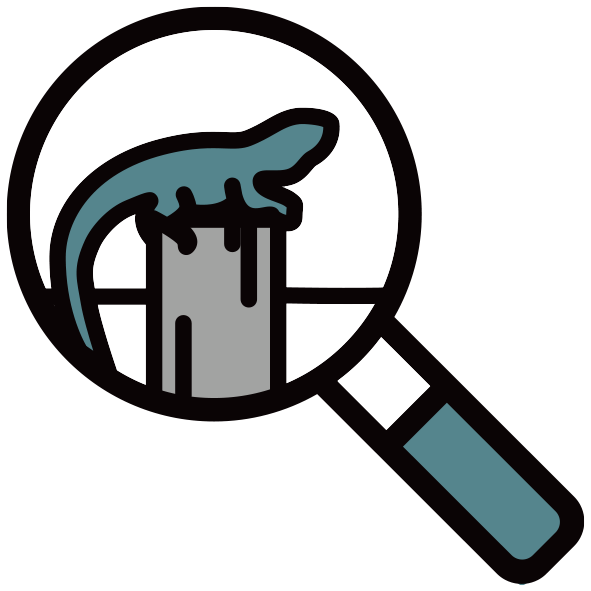
NSW DPI are promoting April as sugar shake awareness month. The “Sugar shake month” initiative will help you familiarise yourself with the Australian Honey Bee Industry Biosecurity Code of Practice due to be implemented 1st July 2020.
From 1 July 2020, it is a mandatory requirement for a beekeeper to conduct a minimum of 2 sugar shakes per apiary per season.
This can quite easily be achieved with your mandatory brood inspections at the beginning of the season (spring/early summer), and then before wintering your bees, hence April on your last brood inspection before your bees go into winter. When undertaking your autumn brood inspections and shaking or brushing bees from a brood frame, it is quite easy to shake bees to roll through a sugar shake. Only one hive per apiary or stand of bees is required to be tested for exotic mites.
How to sugar shake bees
How to sugar shake bees
I have found the use of a bucket with clean water to be the best method. As the sugar dissolves away it is quite easy to see anything suspect.
By testing your hive or hives you are not only following best practice as a beekeeper, you are also contributing to a greater data set that helps prove Australia is free of Varroa.
Some key facts on Varroa
 Stay on Adult bees 4-11 days and maybe longer if no brood present in the colony; will leave the bee to enter a brood cell to begin laying
Stay on Adult bees 4-11 days and maybe longer if no brood present in the colony; will leave the bee to enter a brood cell to begin laying- May live 5 days without the presence of honey bees but would need to be reintroduced to a colony to reproduce (female mite)
- Prefer drone brood to breed on and in, and mite numbers will increase more rapidly when drone brood is present in a colony
- Populations increase faster in climatic areas that support year round brood rearing
- Varroa can be spread by drifting bees (drone bees drift from hive to hive and even between apiaries), foraging bees and of course robbing of infested colonies (remembering we don’t have Varroa)
- Visual sighting is very low as a detection method (Across the ditch in NZ it was estimated that Varroa had been present for up to 5 years before discovery)
- Earliest detection also assists in the containment or Quarantine
Why is widespread surveillance important?
The health of the beekeeping industry is important in itself, but also has flow effects to pollination-reliant industries and the wider community that benefit from healthy hives, their products and the services they provide.
Australia is one of the only countries that is Varroa free which puts us in a great position of having the cleanest honey and wax products in the world. This is not only good for our own backyard bees but for commercial operations to gain better export opportunities, providing a return that supports industry and community.

Varroa mite in icing mix
Report your sugar shake results
To report that you have undertaken a sugar shake and to log your results you can do via the following methods:
- Online – NSW DPI Sugar Shake Survey
- Email – [email protected]
- Text message – 0409 299 415.
Found something unusual?
If you find something suspect, it is important to keep a sample. Simply place it in a small container with methylated spirits and report your find by calling the Exotic pest hotline on 1800 084881.
 Alternatively, report anything unusual through the FREE MyPestGuide Reporter app https://www.agric.wa.gov.au/apps/mypestguide-reporter. Select ‘Make a Report’ and choose ‘Peri-urban Environmental Biosecurity Network’ from the ‘Send Report to’ list.
Alternatively, report anything unusual through the FREE MyPestGuide Reporter app https://www.agric.wa.gov.au/apps/mypestguide-reporter. Select ‘Make a Report’ and choose ‘Peri-urban Environmental Biosecurity Network’ from the ‘Send Report to’ list.
Importantly, if in doubt, still report. Reports that don’t turn out to be exotic pests still provide useful data that underpins pest-free status in many areas of agriculture.
Further information
Find out more on NSW DPI Sugar Shake Month.
